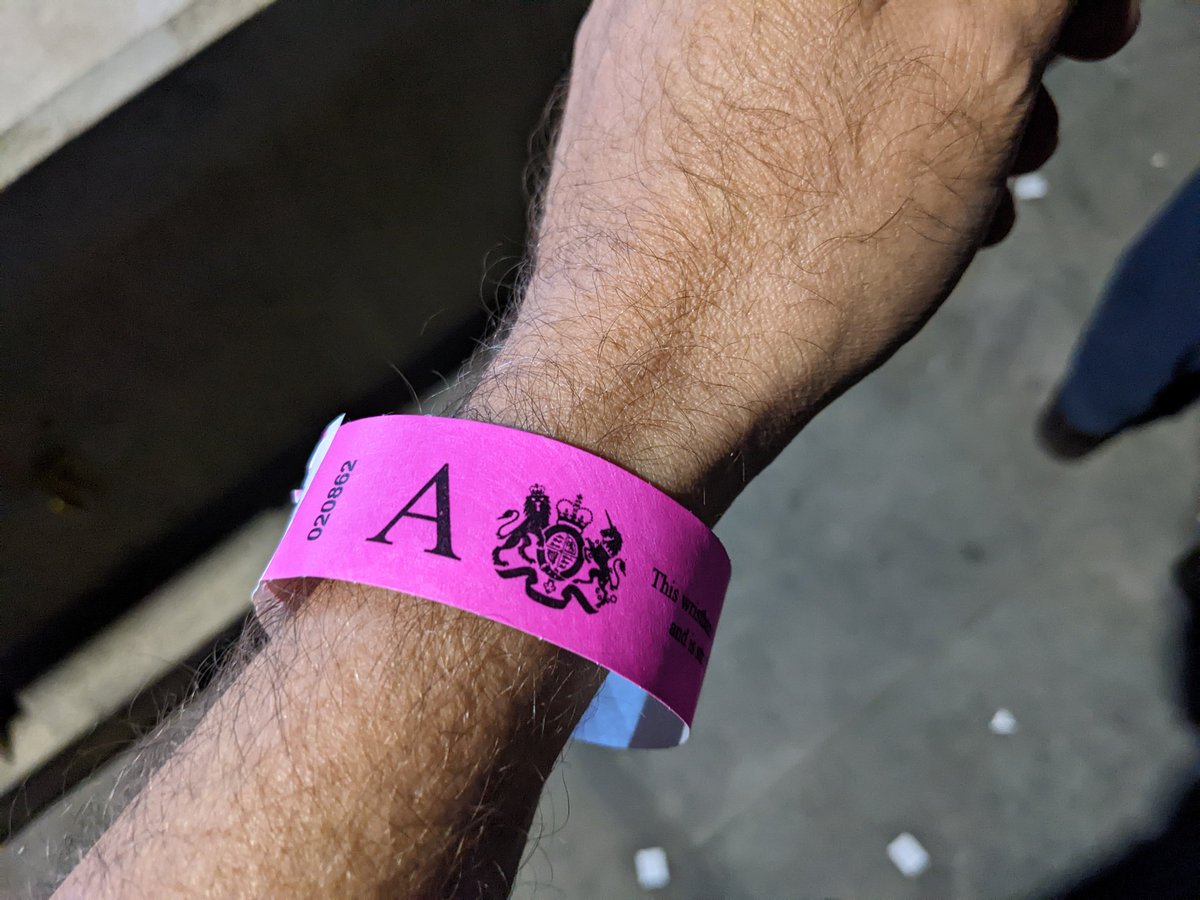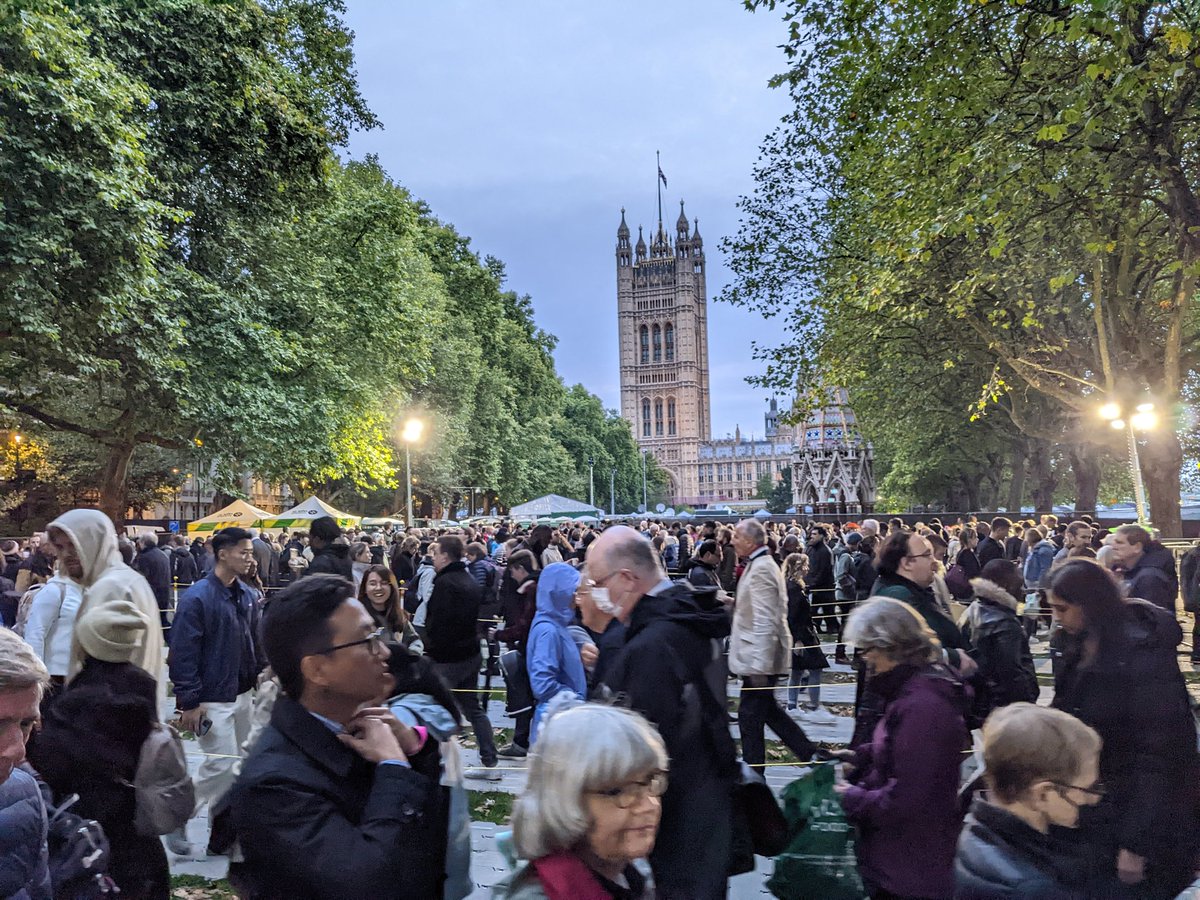Behold... The Queue.
Currently starting at London Bridge - with lessons in the noble art of pugilism to deal with queue jumpers.
Currently starting at London Bridge - with lessons in the noble art of pugilism to deal with queue jumpers.

Hopefully the @IlluminatedRiv will have permission to be left on all night for people in The Queue to enjoy during the long shuffle. 

Four people in front have given up on The Queue, but now the last trains have gone it's unlikely that many more people ahead will be able to give up.
We're now captives of The Queue.
We're now captives of The Queue.
Caffe Nero is experiencing an expected windfall from The Queue as monarchy mourning benefits mammon. 

We're now seeing signs warning that you need wristbands to be in The Queue, but none have been handed out yet.
One of the reasons I read books on tablets is that I can enlarge the font size to something more comfortable for my eyes.
Oh, and the backlight makes it really easy to read at 2am in The Queue.
Oh, and the backlight makes it really easy to read at 2am in The Queue.

Has taken just under 2 hours for The Queue to get from London Bridge to Blackfriars Bridge.
As you shuffle forwards in The Queue don't forget to occasionally turn around and look behind you to see the City in its glory. 

There are now two queues as Caffe Nero at the Oxo Tower is doing a roaring trade offering caffeine to keep The Queue awake. 

At Gabriel's Wharf a row of portaloos means the quiet chatter of The Queue is now punctuated by the regular thumps of portaloo doors being opened and closed.
We've also reached the part of the Southank where benches are starting to appear, offering rest for weary feet.
We've also reached the part of the Southank where benches are starting to appear, offering rest for weary feet.
Three hours in The Queue and I'm nearly at Waterloo Bridge.
This is also where the river path widens into the Southbank and loads of benches appear to offer a moment of relief before The Queue shuffles forward once again.
This is also where the river path widens into the Southbank and loads of benches appear to offer a moment of relief before The Queue shuffles forward once again.

The @BFI has set up a big screen outside their Southbank cinema showing royal films from their archive as The Queue shuffles past. 

It's 5am and now I have the coveted wristband!
Where once I was but an apprentice of The Queue, now I am a master of The Queue.
My skills are complete.
Where once I was but an apprentice of The Queue, now I am a master of The Queue.
My skills are complete.

As The Queue passes behind the old County Hall, look for the wooden cobbles (setts) that you can still see in the road - from a time when most of London roads were paved with wood, not stone. 

As we slowly shuffle forward to Lambeth Bridge you can see the crowd on the other side of the river under the floodlights in Victoria Tower Gardens as The Queue nears its ultimate destination.
This final southern stretch of The Queue outside Lambeth Palace is where the TV crews have set up, getting ready to tell the breakfast news about this very peculiar British custom. 

Nearly at the end of "the snake" as this part of The Queue has been nicknamed. Ladies are handing out sweets to people needing a dose of sugar for the final stretch. 

And it's done.
Just under eight hours in total.
I had assumed five to six hours and had I known it would be eight, that might have detered me, but I am really glad to have endured The Queue to pay final respects.
It's a memory that won't be forgotten.
Just under eight hours in total.
I had assumed five to six hours and had I known it would be eight, that might have detered me, but I am really glad to have endured The Queue to pay final respects.
It's a memory that won't be forgotten.

• • •
Missing some Tweet in this thread? You can try to
force a refresh













